Choosing a milling vise
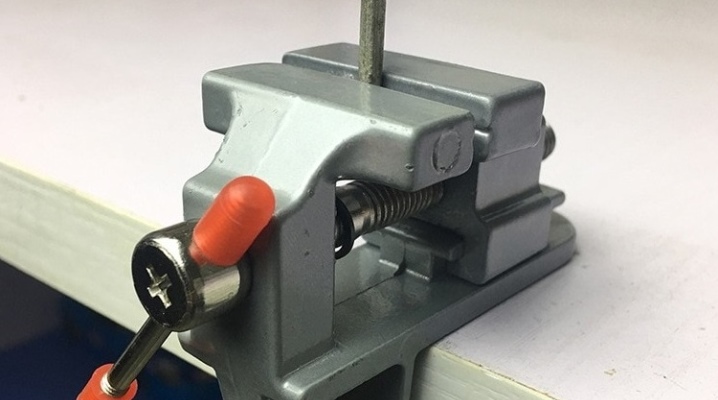
In the production of carpentry and locksmith work, a reliable fixation of parts is required before sawing, drilling, planing. A special device of the mechanical principle of operation, which is used for such fixation of workpieces, is called a machine vise. Use this device when it is necessary to safely handle the part, for a good level of fixation, and so that both hands are free.
Peculiarities
The device performs two tasks: it fixes the workpiece firmly and positively affects the quality of its processing. And also a good execution speed is achieved.
It is difficult to find a workplace that is not equipped with a milling machine vice. At manufacturing enterprises where parts are mass-produced, workplaces are equipped with special devices that allow them to be fixed. Where production is small or repairs are performed, or there is a workshop in the garage, a vice is a device that can hardly be overestimated.



The main and significant parameter for a machine vice is rigidity. The absence of a squeal, which crushes the ear, when processing a part is achieved by the rigidity of the vice. Without this, the cutter would rattle. A tool that is expensive would simply fail ahead of its intended useful life. The surface of the part would also not be properly processed, it would have roughness. Such details are often rejected, which leads to financial losses.
Universal locksmith vices are equipped with corrugated jaws, and machine vices always have smooth jaws. The surface must be finished - the use of a rough version immediately after they have been cast is excluded. The processing of the sponges is carried out on a cutting tool (a milling cutter or a chisel is used). The next step is grinding. A surface grinding machine is used, with the help of which it is possible to achieve the desired result: the roughness and shape of the surface acquire the specified values.

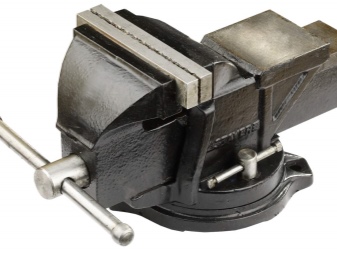
The release of any product, including machine vice for CNC, has a complete set that meets the requirements of the required standard - GOST (state standard):
- the vice meets the requirements of GOST 16518-96;
- using the bolts included - 13152-67;
- vice - 4045-75;
- clamps - 4735-69;
- clamps - 18758-80.
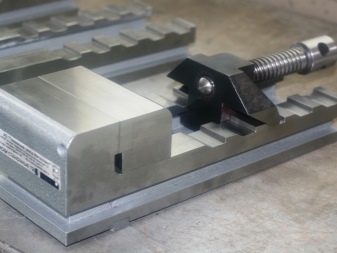

Appointment
The movement in machines equipped with a rotary device is carried out by the tools, not the part. This principle helps to reduce the cost of the slewing gear. but performing work from the back of the part from the master is theoretically possible. In practice, it is unlikely to be done, the visibility of the workpiece by the master when performing the work is almost absent.
The following situation is a good example. It is necessary to process a metal part, the shape of which is a bar. On each side, a recess must be made, the shape of which is a half-cylinder. The master does not see the cutter and does not know whether it reaches the end of processing - the height of the workpiece does not allow this. The parts can be corrected if the cutter has not completed its work to the end. But there are difficult recesses in which this will not be possible.

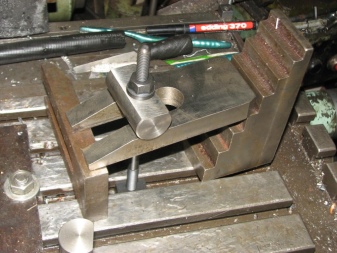
When using a rotary machine vice 160-250 mm, the situation is different. The foreman will have to stop the work to walk around the machine, in order to continue it later. The cutter must be retracted beforehand.
It is possible to use a rotary vise, on which the master will turn the part in the required direction. Both options differ in time of 1 minute, the productivity will increase by 25%.

Machine milling vices are used when working on devices where machine control is carried out for a number of reasons.
- The machine can be programmed so that the workpiece to be machined turns from the side where it can be seen. The master will be able to control the processing process. This will be useful to him especially when putting a new program into operation. The error can be seen immediately, and not after the manufacture of the part.
- There are situations in which it is necessary to turn the workpiece and the cutter must remain in place. It could be making a perfect circle.
- A large number of workpieces are convenient for processing when fixing in a machine vice rotated by 90 °. Then the working position is set.


Device and principle of operation
When processing metal, wood or plastic parts on a milling machine, they are fixed in a vice. The simplicity of the device makes it possible to install them in a home workshop and in manufacturing enterprises of various sizes.
The main elements of the vise are a pair of jaws that are opposite each other. With their help, a part is fixed for further processing using a machine. The clamping is carried out by the action of the threaded screws and is operated with the help of the hands. There is a moving jaw in the vise, and there is a fixed jaw fixed to the bed. This ensures the fixation of the part.
The design of the locking mechanism has a trapezoidal screw with a running thread. The mechanism is connected to a moving part, which is set in motion during rotation due to the fact that there is a nut in the inner part. The master rotates the shaft with his hands, driving the pneumatic cylinder and the eccentric. With the help of special holes that the milling machine has, the vice is fixed on it.

Species overview
The market offers many models and varieties that have their own field of application. The milling vise is divided into:
- vise with hydraulics;
- rotary machine tools;
- global;
- self-centering;
- sinus;
- pneumatic.



Machine rotary
The device has a main element - a rotary disc. With its help, the part is moved according to the program parameters specified to process it. There is a tight clamp to fix the vice. It resembles a rod on which there is a thread. The regulator is removed outside the rotary part. The rotary disc is provided with special grooves that allow the manual control to be securely fixed. It has two metal plates that are parallel to each other.
The adjustment on the bed is carried out using a special rod. It is threaded and perpendicular. The opposite side is equipped with a handle. The selection of the technical characteristics that the drive shaft possesses is carried out in compliance with the main condition - the jaws should not be damaged during operation. These parameters allow you to adjust the distance from one jaw to the other and the compression force. To make it easier for the master to work, some vise models have both movable jaws and are equipped with a lever for compressing parts with acceleration.
The use of a manual vise with a rotary mechanism is carried out in the conditions of small private workshopswhere fragile materials are processed. They can be damaged by automatic devices.
Manual adjustment gives control of the clamping and the ability to calculate the force. Are inexpensive.
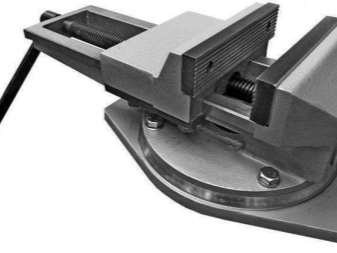

Pneumatic
The base structure has two rotating plates, the vice has parallel plates and is equipped with rails. The adjustment is carried out using a tube, it has a connection with the moving part of the device frame. A hand or electric pump delivers compressed air. When you need to fix the workpiece, air is supplied in a tube connected to a piston that moves forward. In order to weaken the efforts and open the jaws of the vice, the pneumatic valve is switched to bleed air from the system.

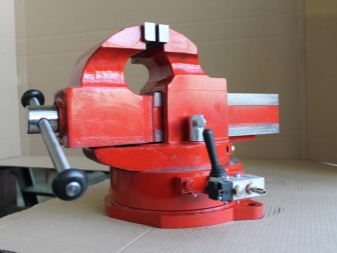
Machine tools with programmed control are equipped with an electric vise. In this modification, they rotate automatically when the part is being machined. The milling process takes place with good efficiency, the compressive force is greater than when using a manual device.
Hydraulic
The principle of operation and design is the same as in the pneumatic vise. But they are filled not with compressed air, but with liquid.
Water is often used, but if more force is needed, a fluid with an increased viscosity and more elastic can be applied. It should be noted that in hydraulic machines the pump is not open to take in the ambient air, but is connected to a special reservoir in which the liquid is located.
Hydraulic devices are used in various types of manufacturing enterprises, which have the opportunity to purchase expensive and highly efficient equipment that allows the process to be fully automated. Low power vices are found in a typical workshop. But their advantage over hand-held models is questionable.


Operating rules
In order not to damage the workpieces and not injure employees in the workplace, you should adhere to the recommendations of specialists.
- It is worth refraining from using heavy objects to fix the workpieces. This will negatively affect the accuracy of the design.
- The device is installed on the desktop, and it is also fixed there.
- The vise is used as an auxiliary equipment when the workpiece is processed using a milling machine.
- Clamping of the workpiece is carried out with the help of jaws; a separate calculation of the force is carried out for each material.
When the work is completed, the vice is cleaned, removing chips and dirt. Then the device is lubricated. Observing the technological requirements and safety precautions for the milling cutter, the master will be able to produce high-quality processing of parts using the machine.
For convenient processing of workpieces in a certain position, they are fixed on the working surface using a milling vise with a rotary mechanism. With their help, a high and precise compression force of the part is achieved. There are several types of such devices, and each has its own pros and cons.

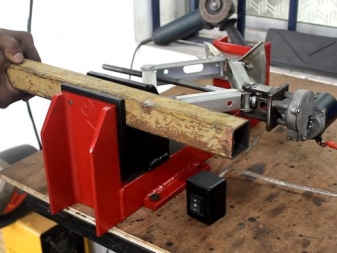
See below for how to use a milling vise.













The comment was sent successfully.